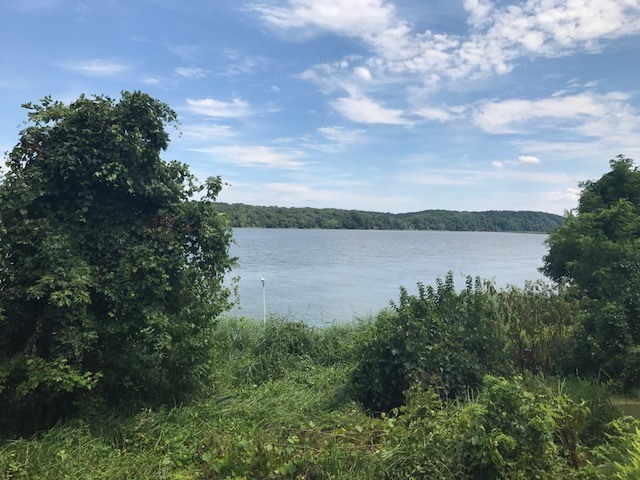Patuxent Riverkeeper Fred Tutman talks race and the environment | Part 3 of 3
By: Malaika Elias

This month, Waterkeeper Alliance is focused on telling stories about intersectional environmentalism. In this 3-part series, Waterkeeper Alliance Organizer Malaika Elias sat down with Patuxent Riverkeeper Fred Tutman to discuss race and the environment, Environmental Justice, and the Patuxent River. Read part 1 and part 2.
Malaika Elias: You wrote an article titled, “Why Green is not the new Black or Brown” in 2012. Do you still feel the same sentiments now in 2018? If so, what is the way forward for inclusivity in the environmental movement?
Fred Tutman: I do believe in that article and what I had to say because it drew from my own epiphany that, after some 30+ years of environmental work, simply acknowledging that race is important to the environmental cause was an important step. In effect, taking off the blinders and getting real. As long as the pretense prevails in some quarters that race is irrelevant, unimportant, or divisive, or that diversity comes from a script—then it’s impossible to get on a reality check with a community of color or an Environmental Justice community.
We (people of color) don’t have the same rankings or voice in the environmental movement. Sometimes we feel like guests instead of full partners. As much as I think in principle that we all need to be in the same movements—because we’re all earthlings—we are also co-inheritors of this racial tapestry rooted in slavery and colonialism and all kinds of other “isms.” We don’t all have the same means and mechanisms toward empowerment or self-actualization. I believe that sometimes people of color give up our power just by joining movements that don’t reflect us, don’t represent us, and actually are not that interested in hearing our views unless they comport with the broader, dominant, white environmental movement. I’ve struggled with this problem along with others and a lot more struggle is needed. The idea that there is environmentalism for white folks and environmentalism for black folks does not ring true to me.
But I suspect that the struggle that some white organizations have in trying to diversify is because it’s never occurred to them that people of color are actually boycotting them. Sometimes we are staying away because we don’t see power for ourselves, we don’t see relevance to our communities or circumstances, and we don’t see opportunities to address any or many of the local problems that face our communities. This is quite the opposite of the same old cliché that says “black folks don’t care about the environment” — which is a very expedient and reductionist conclusion to draw. Everybody cares about their own environment, but sadly they just may not care so much about yours! I find that many people who express these claims to me don’t have many connections in ethnic communities. They lack a diverse framework of friends to bounce their ideas off of. How many “diverse” people do they actually know where they can speak openly and intentionally about these things and get some feedback?
It bothers me that sometimes people fear I’m somehow arguing for a movement that doesn’t care about white people’s problems. That hurts. My views on race are formed by a deep understanding of injustice and a lifetime of being black in America. I know how costly injustice is in our society. Not just economically costly, but spiritually and practically exhausting. Race and class issues are tearing this country and society apart and yet these are subjects we have trouble talking about. Race in particular is a touchy subject. It’s extraordinary that some white people believe the “Black Lives Matters” movement is somehow arguing that white lives are less valued. But I think it is the same sort of thinking that seems to imply, at times, that by uplifting the environmental fights and plights of black communities in our work, we’re somehow taking something from white communities? That’s extremely troubling.
In terms of a way forward, I think sometimes including communities of color is as simple as providing the space and welcoming the input. Making it clear that you are here to serve the people—not just recruit yes-men and -women. Getting folks on your bandwagon requires a willingness to share the bandwagon. At Patuxent Riverkeeper, we started having black communities suggest people to be on our Board of Directors, asking us what help we needed, and how they could get involved. It’s an organic process and you have to be willing to make eye contact in order to build trust. Invest yourself in fairness and equity and it makes for really powerful and magnetic messaging! I think that was a key takeaway for us. We’ve done several iterations of integrating different communities in our work, like having shows and events at our office that were planned by our Native American allies and partnering to create programs that serve diverse demographics in our watershed work. We just provide the space and pitch in where asked.
The key takeaway here is that diversity, equity, and inclusion is not so much about a head count of how many people of color you have—it’s about what’s representative of communities. It’s time to take off the blinders. There’s a whole lot more happening that connects to race, place, and the environment that the big and very familiar environmental movement aren’t touching. That is lost capital, potential, and energy in a movement that needs all the energy, ideas, and people power it can get. Kudos to those that are tapping that potential—we need more of that. A truly diverse environmental movement, it seems to me, is a much more exciting and interesting movement to be a part of.
